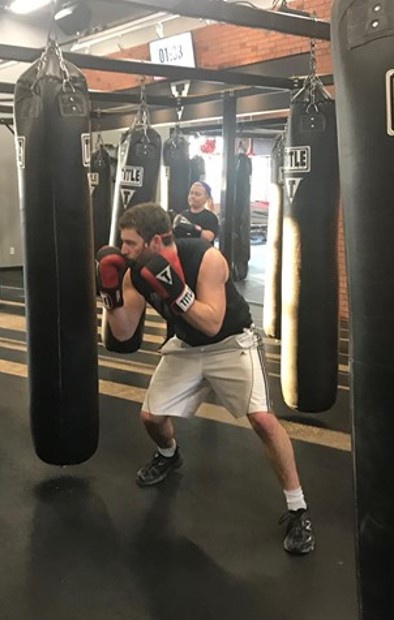
By Daniel Vincent, PTA
Boxing is a full-body fitness and rehabilitation strategy that, in addition to general fitness, can be applied to a variety of conditions seen and treated by Physical Therapists and Physical Therapy Assistants.
Boxing has health applications for both neurologic and pathologic conditions, with significant research focusing on four common conditions addressed by physical therapy.
1. Cancer
2. Stroke
3. Multiple Sclerosis
4. Parkinson’s Disease
Following are four studies regarding these conditions and a brief summary of the outcomes.
Cancer (Doherty et. Al, 2020)
Participants reported general reductions in edema, lower stress levels, and better sleep quality.
This boxing program produced increased walking distance, scapular strength, grip strength, and overall quality of life. Lack of balance improvement is thought to be due to participants beginning with a high level of balance. Boxing is shown to be an effective method of exercise for cancer patients dealing with adverse effects of treatment and has the potential for long-term implementation for communities of cancer survivors.
Stroke (Hurkmans et. Al).
The use of boxing on Wii sports for cardiorespiratory fitness in stroke survivors was investigated in a 2011 study. Chronic stroke survivors played 15-minute bouts of Wii sports with energy expenditure measured during gameplay and modified Borg levels reported after. All participants recorded MET levels between 3.4-5.7, and the average Modified Borg perceived exertion level was 5.3. No adverse effects were recorded, however, supervision was found to be needed when participants with balance deficits played Wii boxing.
– Wii boxing can be performed at sufficient intensity to provide cardiovascular benefits to stroke patients.
– This study indicates boxing on an exergame console is a viable fitness and PT option.
Multiple Sclerosis (Jackson and Edginton-Bigelow, 2013)
– Significant improvements were recorded in most measures post-treatment.
– Post-intervention improvements: MiniBESTest – 35%, gait speed – 10%, TUG – 11%, DGI – 13%, ABC – 19%.
– BBS did not show improvement due to possible ceiling effects from higher-level participants.
– MSQOL-54 showed an upward, non-statistically significant trend.
– No adverse effects, safety issues, or pseudo- symptom exacerbations were recorded during the study.
Parkinson’s Disease (Combs et al, 2011)
-Balance: All participants improved in every balance measure over 12-24 weeks, and most continued to improve up to 36 weeks. For all balance measures, consistent improvements were seen in mod/severe PD cases and small improvements in mild cases.
-Gait and Mobility: All patients demonstrated improvements between 10%-23% in all measures. Mild PD patients achieved these results by 12 weeks, and mod/severe PD patients achieved similar results by the final test at 36 weeks.
-Wide-ranging improvements in all measures are thought to be credited to the full-body approach of the program, including stepping, reaching, dynamic balance and agility.
-Earlier improvements in mild PD cases are suspected to be due to a higher training capacity in less severe disease cases.
-The choice to continue beyond the initial 12 weeks indicates patient enjoyment of the program, and progress continued to be made despite less frequent sessions after 12 weeks.
-Boxing is a feasible community intervention for PD patients regardless of disease severity.
In conclusion,
-Boxing challenges the body in all planes of motion, improves dynamic strength, balance, coordination, and endurance, and can address the needs of many neurologic, pathologic and orthopedic conditions.
-It is a fun, active, and enjoyable task that many patients will look forward to.
-Confidence and an improved outlook is forged, along with functional improvements.
-Many options for implementation are available, including focus mitts, heavy bag training, shadow boxing, and exergame/VR applications.
-Community classes can create a sense of togetherness and belonging.
To see the full PowerPoint, click here: Boxing for PT (1) (2)
For more information on boxing for fitness, contact us today. https://intermountainpt.com/request-appointment/
